The Jabach Portrait Conservation Continued: Next Steps
«Now that the varnish removal from the Jabach portrait is finished, it's time to turn to a rather more thorny issue: the structural conservation work.
The original and surprisingly fine canvas is constructed from five pieces of fabric: a large, central rectangle; two horizontal bands, one each top and bottom; and two vertical bands, one each at the left- and right-hand sides. The horizontal bands run the full width of the composition. This construction is entirely original, planned from the outset to accommodate the monumental scale of the painting while carefully situating the seams in the peripheral areas of the composition.»

Charles Le Brun (French, 1619–1690). Everhard Jabach (1618–1695) and His Family (approximate location of canvas seams), ca. 1660. Oil on canvas; 110 1/4 x 129 1/8 in. (280 x 328 cm). The Metropolitan Museum of Art, New York, Purchase, Mrs. Charles Wrightsman Gift, 2014 (2014.250)
The painting has a double glue-paste lining. Lining is the process of adhering an additional canvas (or two, in this case) to the back of the original one in order to provide additional support. Until recently the entire area of the painting above the upper horizontal seam—about eighteen inches—had been folded back, with tacks hammered directly through the paint surface to secure the picture to a smaller stretcher. We have no hard facts as to when the painting was double lined or when the mounting to a smaller stretcher took place.
There are two inscriptions on the reverse that refer to the painting changing hands in 1816 and 1832. However, it seems to me that the lining was created much later than this and that the inscription, which was probably on the reverse of the original canvas, was simply transcribed onto the lining to avoid losing the information altogether.
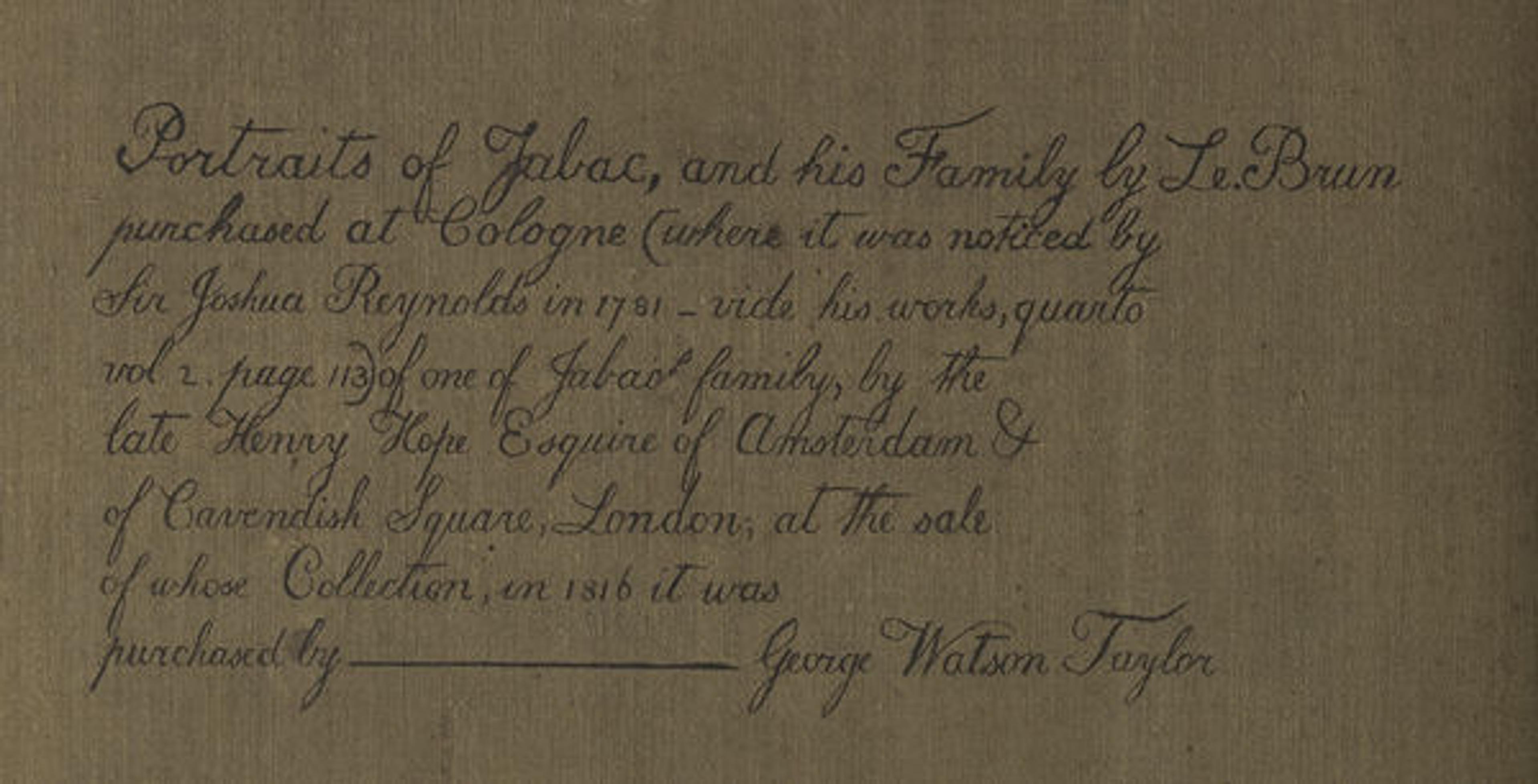
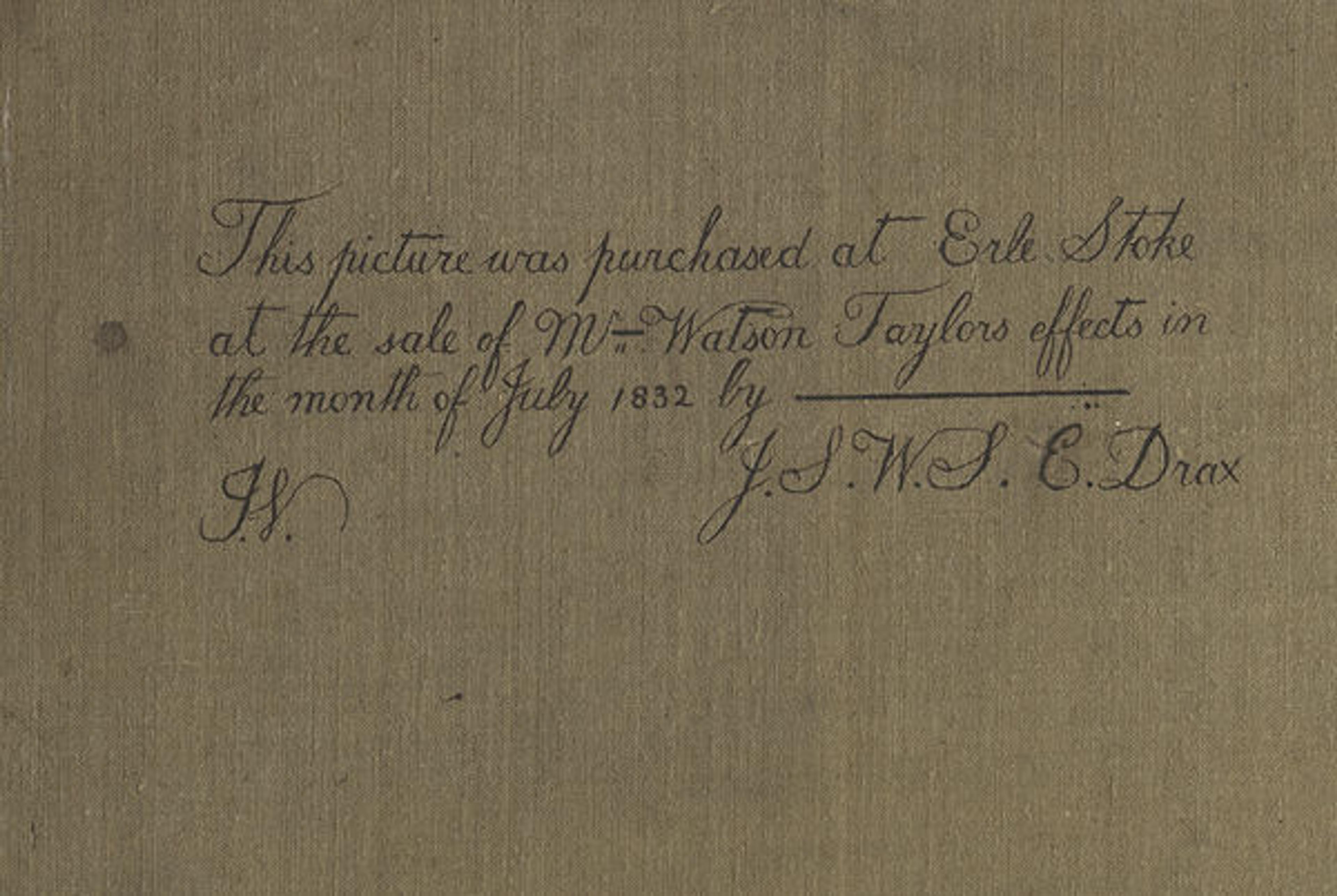
Inscriptions on the reverse of the lining canvas
Olantigh Towers in Kent, where the painting was housed, was apparently very grand but was gutted by fire in 1903. (See http://lh.matthewbeckett.com/houses/lh_kent_olantightowers.html and http://lh.matthewbeckett.com/houses/lh_kent_olantightowers_info_gallery.html for information about the estate.) I am curious how the Le Brun survived—there is no sign of heat damage whatsoever—but what is certain is that the rebuilt and renamed Olantigh House was much smaller, which probably led to the radical step of turning back the top portion of the canvas.
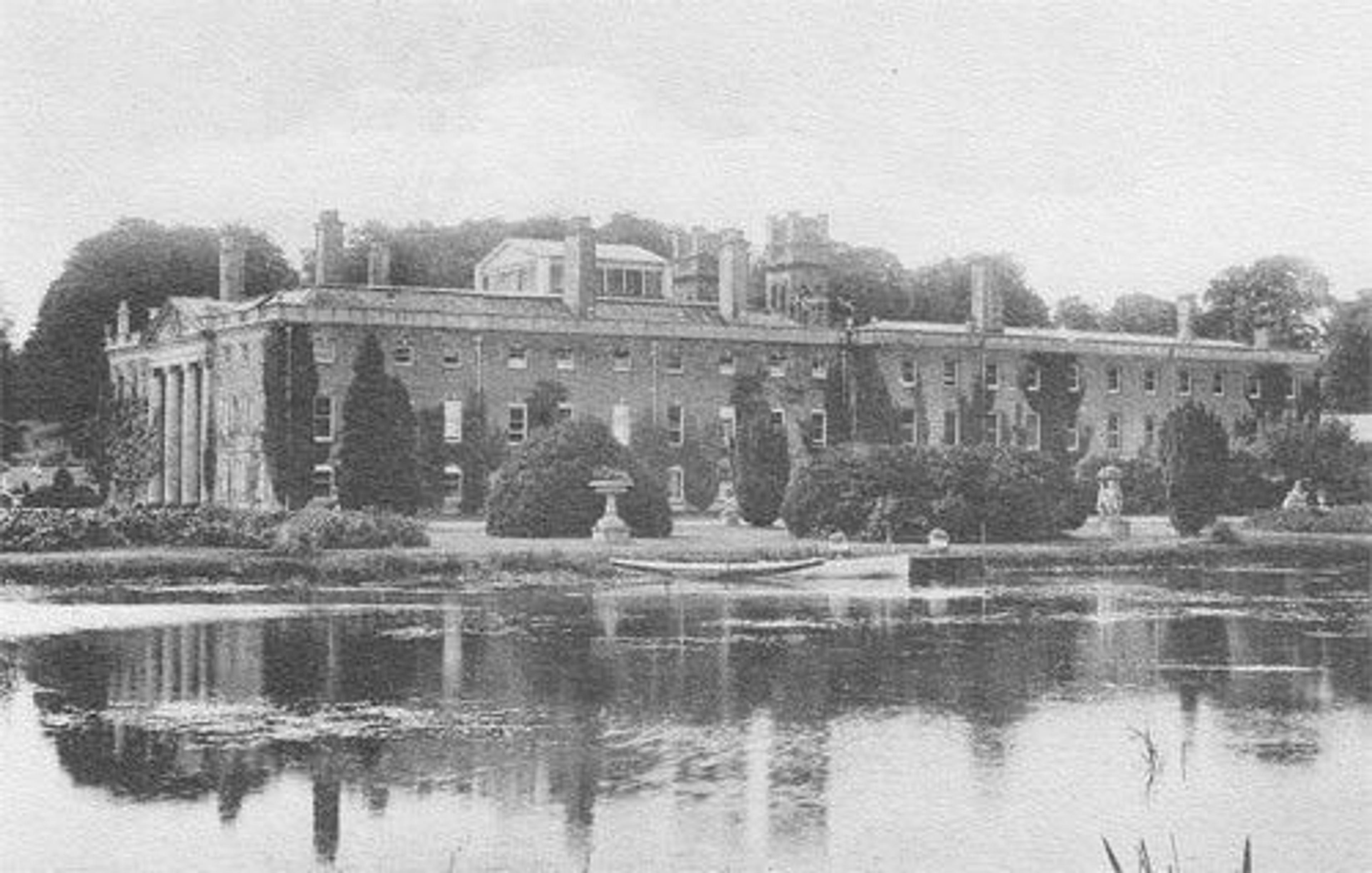
Olantigh Towers prior to the 1903 fire
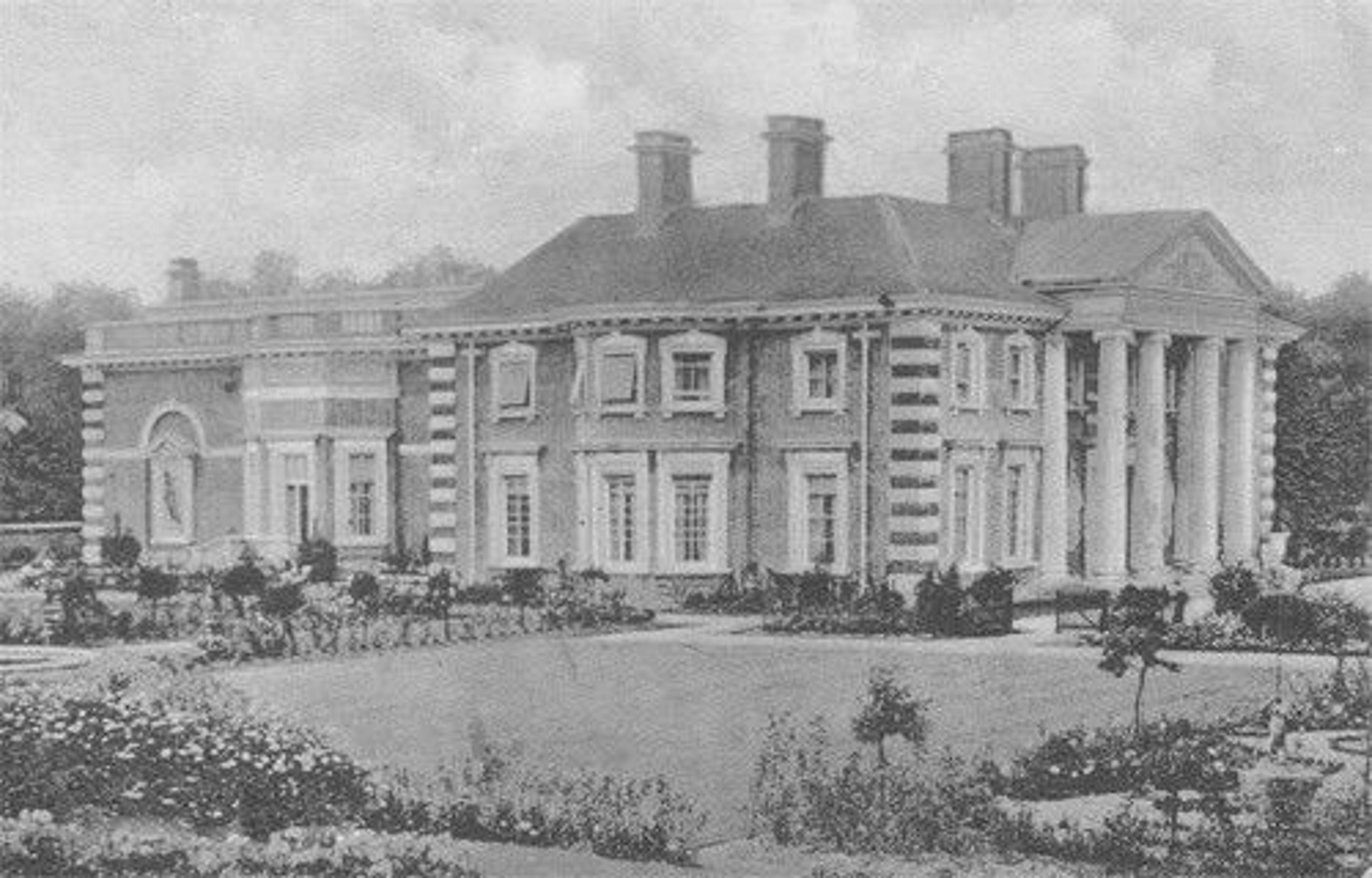
The rebuilt Olantigh House

Installed at Olantigh House, Kent, with top of canvas folded over. Source: Christopher Hussey, "Olantigh, Near Wye, Kent-III," Country Life 146 (August 7, 1969), p.336, fig.7
In 2012, before it was offered to the Met for purchase, the painting was detached from the reduced stretcher, the surface was provisionally flattened out, a strip-lining was attached with a wax-resin adhesive (i.e., strips of canvas just adhered around the perimeter), and then the whole picture was re-stretched over a new stretcher. This was an expedient method of permitting the whole composition to be seen. However, the disfiguring distortions caused by the folding back and tacking now need to be addressed in a more considered manner.

Current state of reverse with stretcher constructed in 2012
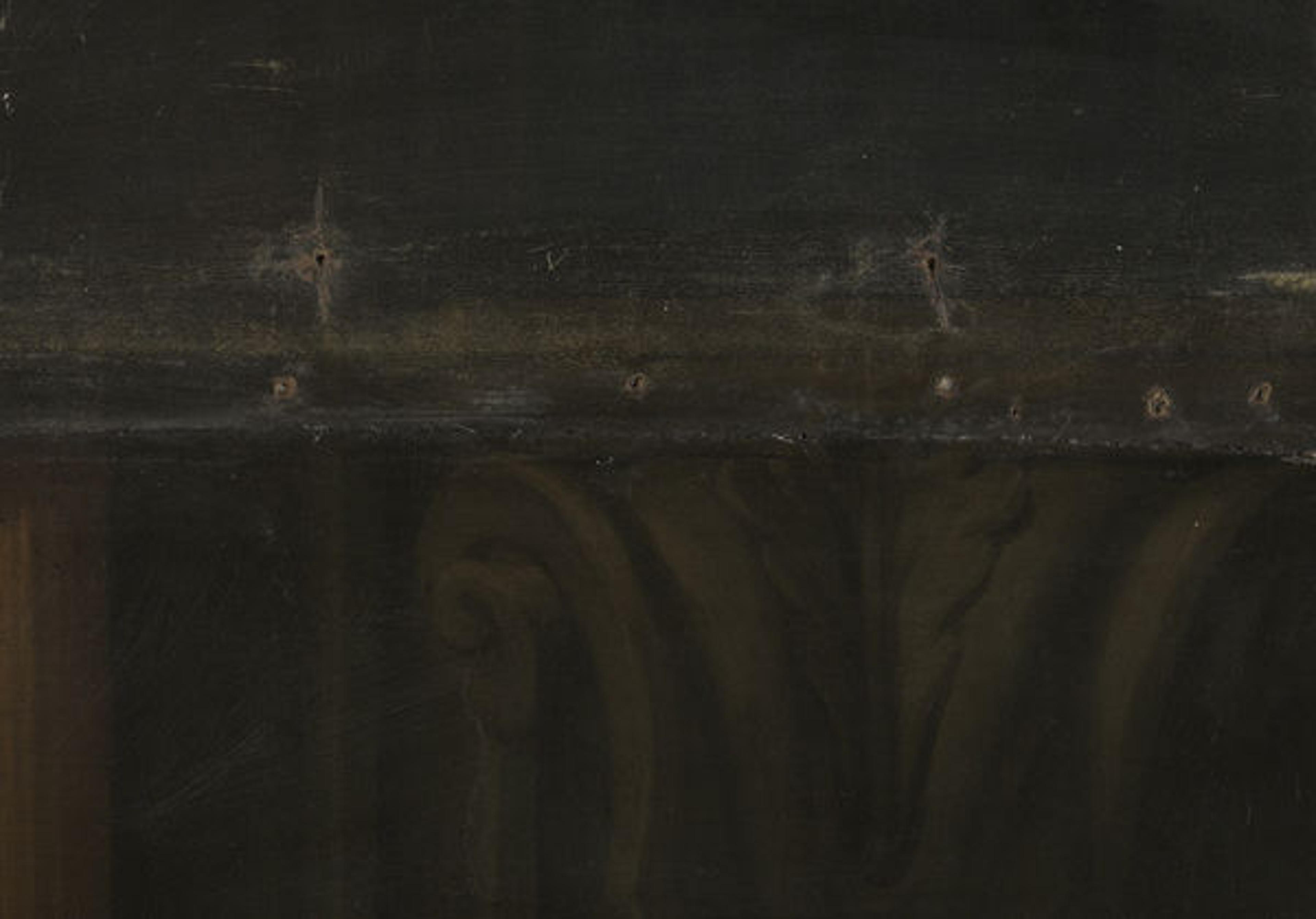
Detail of upper right showing damage caused by tacks driven through original paint surface

Detail in raking light showing planar distortions in the surface
Having had more time to assess the picture, I am not comfortable with the idea of re-lining—that is, the removal and replacement of the present double lining. Ideally, when considering removing a lining, one should have clear evidence that the lining has come to the end of its life, that the glue-paste is so desiccated that the removal of the lining fabric will not put the original at risk. This is not the case here, since the adhesion between the three canvases appears tenacious. After discussing the idea with my colleagues over several weeks, I propose to lay the painting face down on a pre-prepared surface. The stretcher will then be removed along with the provisional strip-lining and associated adhesive that was applied in 2012. Using a 3-foot-diameter tube that is a little wider than the painting, I will turn back the top edge in order to work on the severe distortions and ruptures locally.
This will involve a great deal of planning and teamwork, which will be the subject of my next post in a few weeks.
Michael Gallagher
Michael Gallagher is the Sherman Fairchild Chairman of the Department of Paintings Conservation.